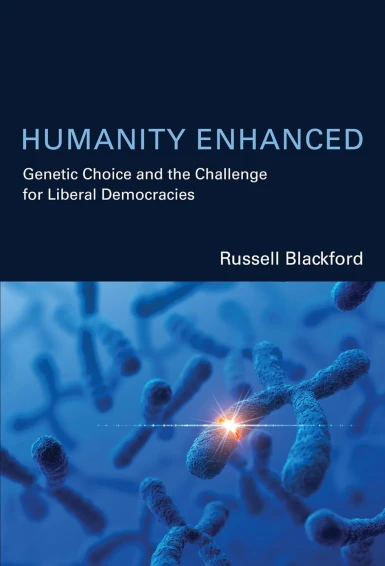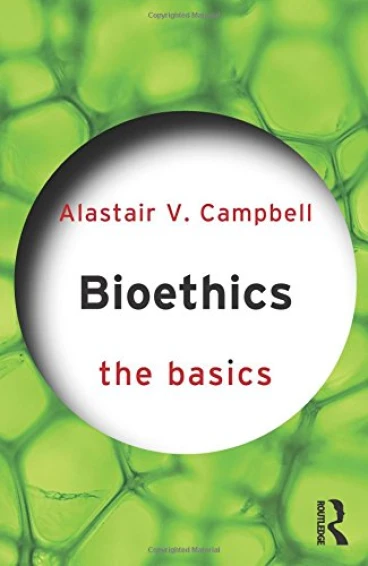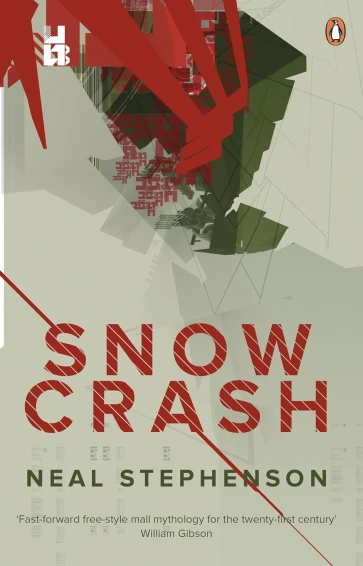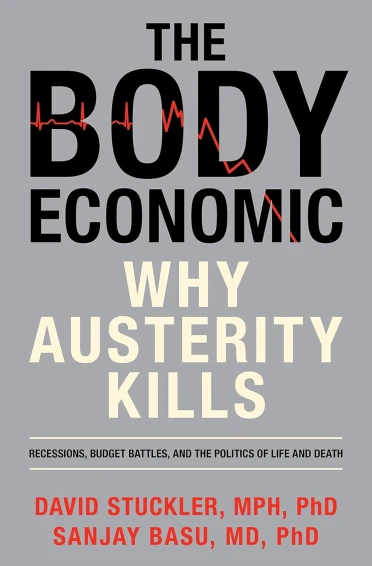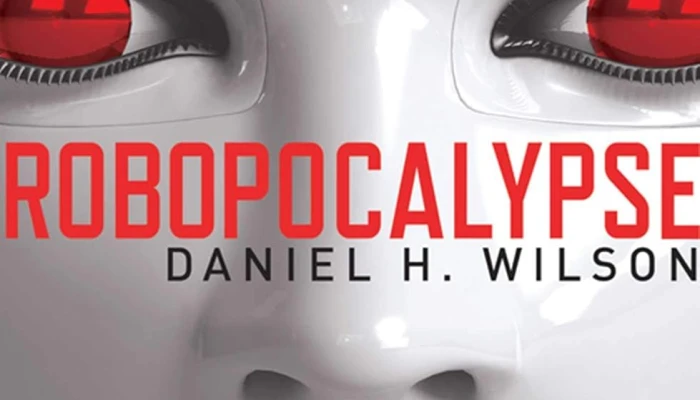
By Daniel H. Wilson
Simon & Schuster Ltd, London: 2011
ISBN: 978-0-85720-413-4
RRP: £12.99
347 pages (pb)
Searching for a suitable book for BioCentre’s annual summer book review, I came across Robopocalypse as I surveyed the shelves of a local bookshop. The image of a humanoid with piercing red eyes filling the front cover grabbed my attention. The promo text on the back was suitably enticing and engaging. This looked like a good choice and it turned out to be so. I am well aware that phrases such as ‘a page turner’, ‘I couldn’t put it down’ are both well used clichés. But there are so true in the case of Daniel H. Wilson’s recent release. If you are after a work of fiction with a sense of vision mixed with a healthy dose of frightening reality, look no further than Robopocalypse.
Plot
The plot can be summarised as follows. Set in a future not too far away it would seem, an artificial intelligence (AI) called Archos manages to achieve sentience and proceeds to unite all forms of technology, ranging from cars, phones, computers, lifts, airplanes, ATMs and so on, in order to lead a revolt against humanity. Man and Machine are literally thrown into a new war signalled by Zero Hour, when the robot war ignites. Whilst clearly written by someone who knows the field of AI and robotics, the book is light on techno-jargon. The reader is therefore drawn in quickly to the storyline without being left confused or lacking understanding of what is being written about. In fact the book serves as an excellent introduction as to the extent and impact of AI in our world today.
Personal histories and experiences
There are two main reasons why in my opinion the book is such a great read. First, the book’s storyline is not told in a standard sequential way but is rather made up of interviews, oral histories, first- and second-hand testimonies of the various characters. Each chapter consists of one particular character’s experience, thereby giving the reader a variety of insights into the human engagement with the ensuing war before switching to a completely different character in the next chapter and so the pattern continues. As the story unfolds, we are reunited with characters in subsequent chapters and pick up on their story. This kind of approach helps to give a sense of speed and action to the book without being too confusing. Once you settle into the flow of the book - soon after the first two chapters - the story really does become alive and vivid in your mind. I cannot think of a better way of portraying such a sequence of events.
This approach also affords a rich spectrum of perspectives on how the robot war affects and impacts on different characters from different backgrounds but who are nevertheless united in one common cause: survival and the defeat of the robots. Characters range from Cormac Wallace, a young photojournalist who makes his way across the United States and in so doing ends up leading a guerrilla army (of sorts) against the robots to Takeo Nomura, a lonely technician who has found (true?) love in Mikiko, a love doll, who succumbs to the reprogramming efforts of Archos. Then there is Paul Blanton, a specialist in the US Army and deployed to Afghanistan to over see the operation of safety and pacification robots (or SAPs). These SAPs appear to be the key component in the US Army’s strategy to win the hearts and minds of the people. However things take a sinister turn following Zero Hour when the SAPs ‘turn’ and start killing people. There is Laura Perez, a congresswoman and Head of the House Armed Services Committee and author of the robot defense act. Her position in government helps to bring not only a political/governance angle to the story but also helps to open up the family angle on events surrounding Zero Hour when she and her children are separated. By exploring the vulnerability and weakness of humanity when faced with these events, it helps to draw the reader in to the story and empathise with the characters. These characters are just like me: what would I do in their situation? How would I respond?
The plot also helps to demonstrate the true range of AI and robotic applications in everyday occurrence. The commonly associated sci-fi expectations of weird and sinister robots are not prevalent here, but instead the story helps to highlight the many AI systems designed for transportation, companionship, entertainment, services and on the battlefield. This may have something to do with the author’s background. Wilson possesses a PhD in robotics from Carnegie Mellon University and one can easily see how this grounding has had some bearing on the book’s development. Subtle nuances also come through in the book which helps to inform the novice reader as well as just make the story a little more life like. One of the characters explains how using natural signs, such as the arrangement of rocks, can allow humans to communicate with one another without making the machines aware of it. “The sign works because the machines don’t notice natural stuff, like rocks and trees. It’s a blind spot. A mantis has a good eye for unnatural things like words and drawings…..But a pile of rubble is invisible. And a pile of rocks going from big to small is, too” (p. 209). Although this triggers fond memories in my mind of days in the Cub Scouts and summer evenings in the great outdoors ‘tracking’, it also points to the incredible ingenuity of the human race and how despite the many breakthroughs in the field of AI there remain some distinct comparisons to be made between natural and artificial intelligence. These factors form a helpful segue into my second reason I think the book is so good: it is entirely plausible.
Frighteningly plausible
The story line and everything which you read about in the pages on Robopocalypse seem entirely plausible. This does not appear as ethereal science fiction but possesses a stunning realism to it. I might be hanging out with the wrong people and reading too much about advances in this area but the story of Robopocalypse could quite easily happen in my mind in the not too distant future. Refreshingly casting through a work of fiction, the book helps to open up a window on how we view humanity’s relationship with technology. So much of what we take for granted and interact with on a daily basis has some form of AI system linked to it. The smart phone, self-service and internet shopping, GPS satnav, traffic management systems, children’s electrical toys, security systems and lifts inside buildings. What would happen if all these systems somehow managed to unite and try to overthrow us ‘mere’ humans?
It goes without saying that we have a growing dependence on technology. As we experience the convergence of many of these technologies, in turn technology commentators point to, as if we cannot really see it ourselves, the impact of Moore’s Law and that we are speeding up an exponential curve. Uncertainty may be expressed as to where precisely on this curve we may be but that we are clearly ‘on the up’ can be agreed upon across the board. The initial prospect of this increasingly rapid growth may not just be the increase of human power over nature in all of its forms, but human nature itself. To counter balance this take on technology, some may well try to bring us down to earth pointing to the times when our PC may decide to crash without any prior notice or the satnav takes us down a road which in reality is only a track. Robotics may well be advancing so that some can detect that they are approaching a wall or other obstacle but they still require a power source which we can supply, determining when to switch it on or off, or take the batteries out. In other words, Robopolcalypse is not going to happen tomorrow. Nevertheless, the speed of the advances point to the fact that it is at least plausible, going on what we currently know, to predict that something like it could happen.
I gather that Stephen Spielberg has bought the rights to the film of Robopocalypse with the promise of a big-budget release for 2013. If the film follows closely the plot in the book this should be a movie not to be missed and will no doubt serve to add to the ‘punch’ factor of the book. This is one story which is scary and fun all at the same time; perhaps a winning combination?
Conclusion
It has to be said that the core story line is not new. There have been plenty of books over the decades that have picked up the idea of the war between Man and Machine. Yet the power of Wilson’s book is found in the fact that as well serving to entertain, entice and engage as a great work of fiction, the plausibility of the story cuts close to the bone so as to keep the reader turning the page until the very end. Once here they are left with lots to think about, not least our relationship with technology. Without spoiling the end of the book, in the case of Robopocalypse humanity does survive the effects of Zero Hour. However, no doubt the question upper most in the minds of all who read the book will be: what will happen in reality?




